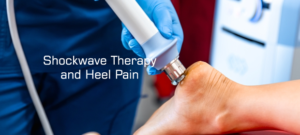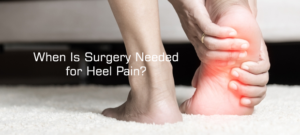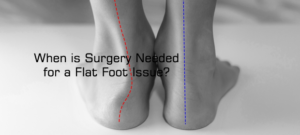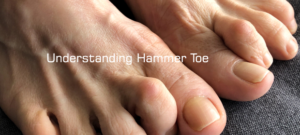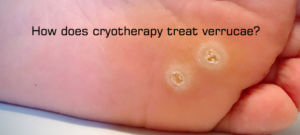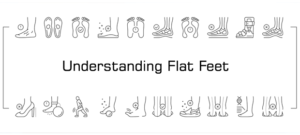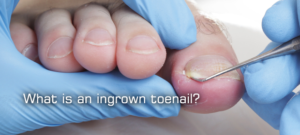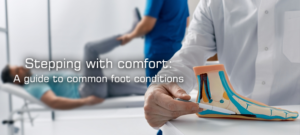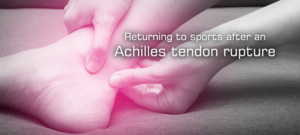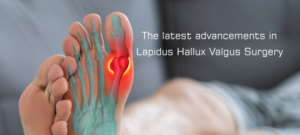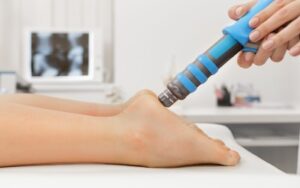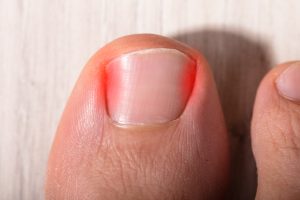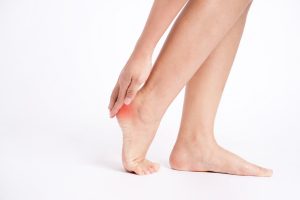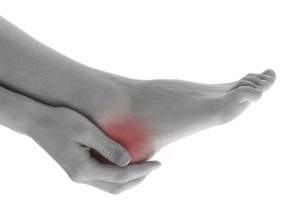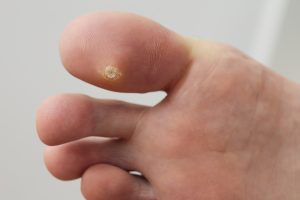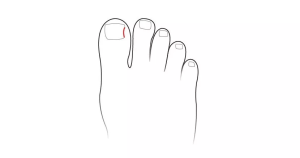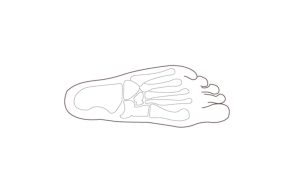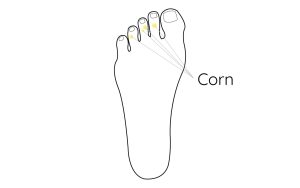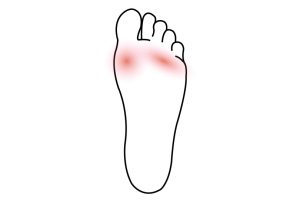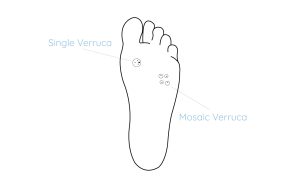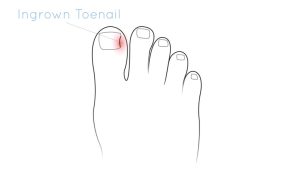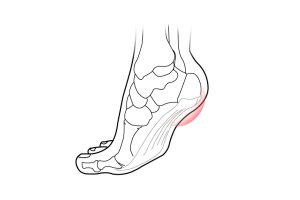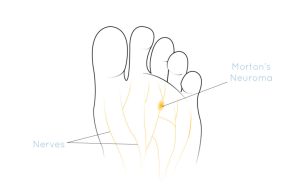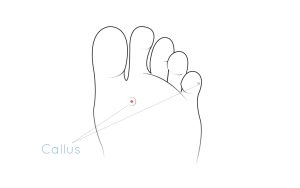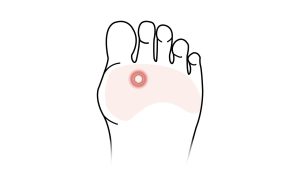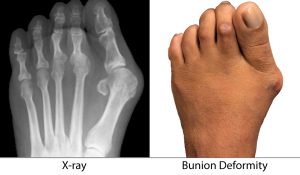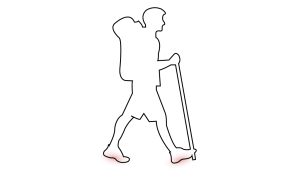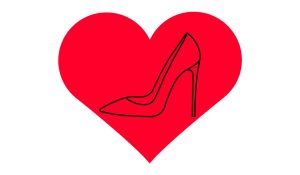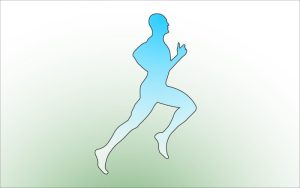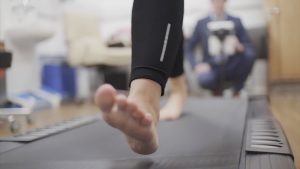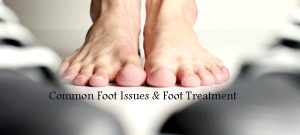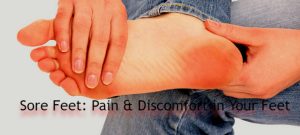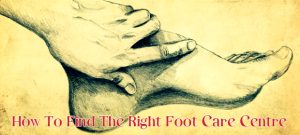Hammer, Claw & Mallet Toes
What is Metatarsalgia?
Metatarsalgia is a broad term used to describe pain in the ball of your foot that can be due to a many problems related to joints, tendons, ligaments and or nerves. Metatarsalgia can be a very painful condition that limits walking and recreational activities as well as your choice of foot wear.
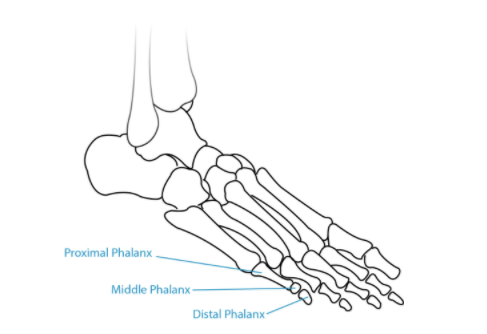
Hammer Toes
With hammer toes, the proximal phalanx extends upwards, the PIP joint is flexed, the middle phalanx points downwards and the distal phalanx is in line with the foot.
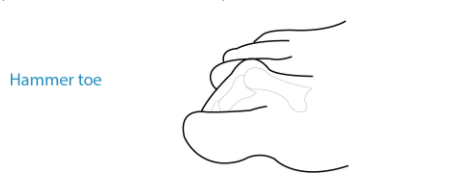
Mallet Toes
Mallet toes affect the DIP joints and distal phalanx. The DIP joint is flexed and distal phalanx points downwards.
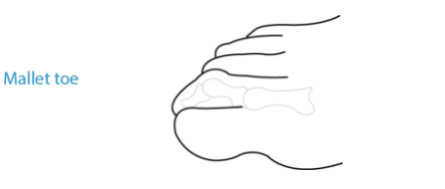
Claw Toes
Claw toes are a combination of both hammer and mallet toes, where both the PIP joint and DIP joint are flexed.

These three toe deformities develop gradually and are strongly linked with poor fitting footwear and / or a long toe. Pressure at the tips of the toe can cause the toes to ‘buckle’ at either of the interphalangeal joints. With the toes regularly held in this shape, the early stages involve the tendons starting to tighten creating a semi permanent toe shape, however, flexion at the joints can be corrected with pressure. Over longer periods of time, the tendons can tighten further and joints become flexed in a rigid position.
Symptoms
Symptoms vary depending on the type of deformity. You can find the toe deformity results in a corn or bursa at the top of the effected toes.
Hammer Toe Symptoms
With the proximal phalanx extended upwards, this can typically increase pressure under the metatarsophalangeal joint, and the top of the PIP joint. This can lead to pain and degeneration under the MTP joint and / or wound and corn to the top of the PIP joint.
Mallet Toe Symptoms
These typically affect the nail and tip of the toe. This can develop a thickened and painful nail and / or callus and wound at the tip of the toe.
Claw Toe Symptoms
A combination of the problems of hammer and mallet toes.
Treatments
Treatments vary depending on the severity of the deformities and symptoms, and can be classified into conservative and surgical treatments
Conservative Treatments
Conservative treatment can help prevent the deformities from deteriorating but will not fix the underlying deformity.
Options may include:
- Wearing footwear with enough space in the toe boxes.
- Orthotics to offload high pressure areas under the foot.
- Taping the toes down to keep them straight.
- Tendon stretches.
Helpful hammertoe exercises:
Reduce the deformity to a straight toe as much as possible. While keeping the toe straight, gently lift the toe upwards so you feel a pull underneath the toe / foot. Hold this for 30 seconds and repeat 3 times a day. While keeping the toe straight, gently flex the toe downwards so you feel a pull on top of the toe / foot. Hold this for 30 seconds and repeat 3 times a day.
Surgical treatments:
Following your consultation and possible X-rays, your consultant may suggest surgical correction.
This may include:
- Tendon lengthening
- Toe shortening
- Joint fusion
It is not uncommon to have a bunion deformity alongside a toe deformity. The procedure to correct both your toe deformity and bunion can be carried out at the same time.
Frequently asked questions
There are some medical conditions that can cause tightening of the tendons but most of the time hammer toes are caused by shoes that are too short, or if you have a bunion pushing over onto the smaller toes.
In early and mild cases the tendons can sometimes be gradually stretched out but, in most cases surgery is required. The hammered section of bone is broken and then the toe set in correct alignment. Your surgeon will discuss surgical options such as with wires, implants or screw fixations.
If the joints in the toe can freely move, the claw toes have developed from tightening of the tendon underneath the toe. Surgically releasing the tendon can allow the toe to straighten back out again.
Related Blogs
Thoughts and advice on foot health care from the Podogo team.








